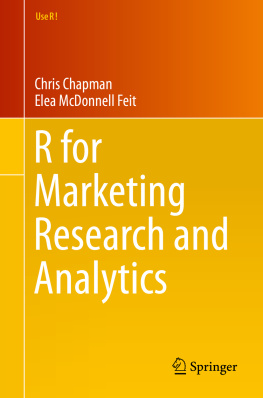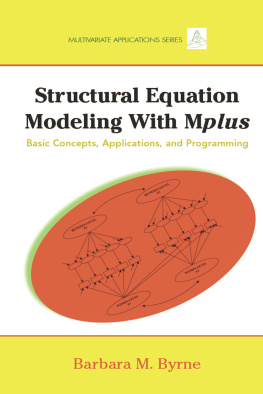Jason T. Newsom - Longitudinal Structural Equation Modeling: A Comprehensive Introduction
Here you can read online Jason T. Newsom - Longitudinal Structural Equation Modeling: A Comprehensive Introduction full text of the book (entire story) in english for free. Download pdf and epub, get meaning, cover and reviews about this ebook. year: 2015, publisher: Routledge, genre: Home and family. Description of the work, (preface) as well as reviews are available. Best literature library LitArk.com created for fans of good reading and offers a wide selection of genres:
Romance novel
Science fiction
Adventure
Detective
Science
History
Home and family
Prose
Art
Politics
Computer
Non-fiction
Religion
Business
Children
Humor
Choose a favorite category and find really read worthwhile books. Enjoy immersion in the world of imagination, feel the emotions of the characters or learn something new for yourself, make an fascinating discovery.
- Book:Longitudinal Structural Equation Modeling: A Comprehensive Introduction
- Author:
- Publisher:Routledge
- Genre:
- Year:2015
- Rating:3 / 5
- Favourites:Add to favourites
- Your mark:
Longitudinal Structural Equation Modeling: A Comprehensive Introduction: summary, description and annotation
We offer to read an annotation, description, summary or preface (depends on what the author of the book "Longitudinal Structural Equation Modeling: A Comprehensive Introduction" wrote himself). If you haven't found the necessary information about the book — write in the comments, we will try to find it.
This comprehensive resource reviews structural equation modeling (SEM) strategies for longitudinal data to help readers see which modeling options are available for which hypotheses. The author demonstrates how SEM is related to other longitudinal data techniques throughout. By exploring connections between models, readers gain a better understanding of when to choose one analysis over another. The book explores basic models to sophisticated ones including the statistical and conceptual underpinnings that are the building blocks of the analyses. Accessibly written, research examples from the behavioral and social sciences and results interpretations are provided throughout. The emphasis is on concepts and practical guidance for applied research rather than on mathematical proofs. New terms are highlighted and defined in the glossary. Figures are included for every model along with detailed discussions of model specification and implementation issues. Each chapter also includes examples of each model type, comment sections that provide practical guidance, model extensions, and recommended readings.
Highlights include:
- Covers the major SEM approaches to longitudinal analysis in one resource.
- Explores connections between longitudinal SEM models to enhance integration.
- Numerous examples that help readers match research questions to appropriate analyses and interpret results.
- Reviews practical issues related to model specification and estimation to reinforce connections.
- Analyzes continuous and discrete (binary and ordinal) variables throughout for breadth not found in other sources.
- Reviews key SEM concepts for those who need a refresher (Ch. 1).
- Emphasizes how to apply and interpret each model through realistic data examples.
- Provides the books data sets at www.longitudinalsem.com along with the Mplus and R-lavaan syntax used to generate the results.
- Introduces the LISREL notation system used throughout (Appendix A).
The chapters can be read out of order but it is best to read chapters 1 4 first because most of the later chapters refer back to them. The book opens with a review of latent variables and analysis of binary and ordinal variables. Chapter 2 applies this information to assessing longitudinal measurement invariance. SEM tests of dependent means and proportions over time points are explored in Chapter 3, and stability and change, difference scores, and lagged regression are covered in Chapter 4. The remaining chapters are each devoted to one major type of longitudinal SEM -- repeated measures analysis models, full cross-lagged panel models and simplex models, modeling stability with state-trait models, linear and nonlinear growth curve models, latent difference score models, latent transition analysis, time series analysis, survival analysis, and attrition. Missing data is discussed in the context of many of the preceding models in Chapter 13.
Ideal for graduate courses on longitudinal (data) analysis, advanced SEM, longitudinal SEM, and/or advanced data (quantitative) analysis taught in the behavioral, social, and health sciences, this text also appeals to researchers in these fields. Intended for those without an extensive math background, prerequisites include familiarity with basic SEM. Matrix algebra is avoided in all but a few places.
Jason T. Newsom: author's other books
Who wrote Longitudinal Structural Equation Modeling: A Comprehensive Introduction? Find out the surname, the name of the author of the book and a list of all author's works by series.










